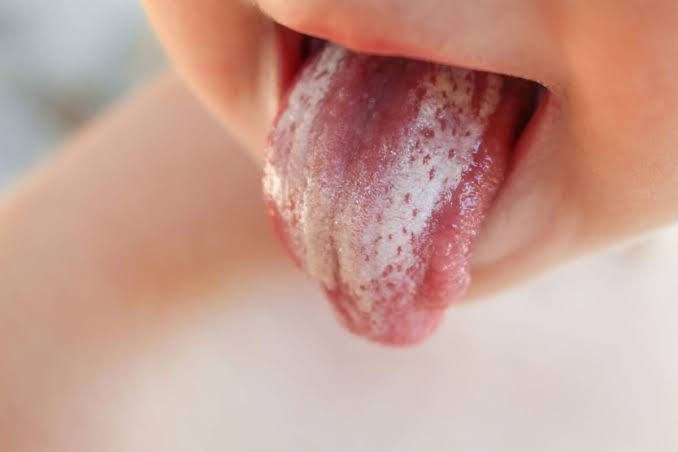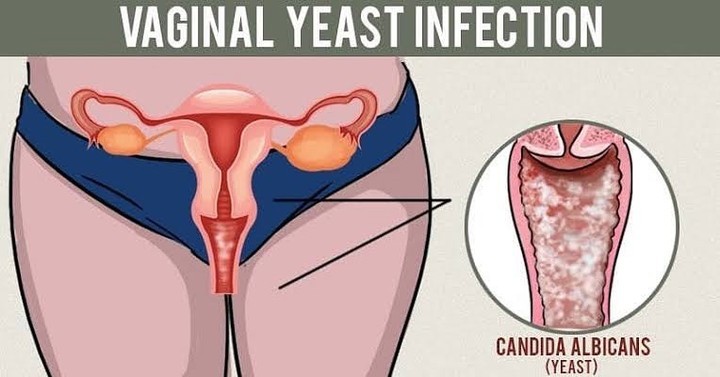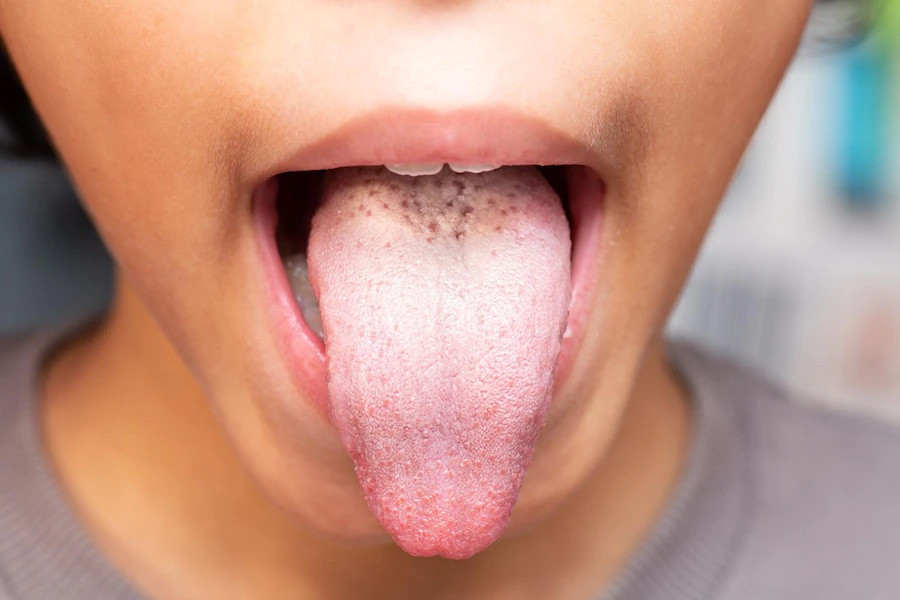Definisi
Oral thrush atau kandidiasis mulut adalah infeksi jamur Candida albicans pada lapisan dalam mulut dan sekitarnya. Candida sebenarnya merupakan organisme normal di mulut, namun terkadang mereka dapat tumbuh berlebihan dan menimbulkan keluhan. Kandidiasis mulut berupa bercak putih di area mulut, biasanya muncul di lidah atau pipi bagian dalam. Terkadang kandidiasis mulut dapat menyebar ke langit-langit mulut, gusi, amandel, atau bagian belakang tenggorokan.
Meskipun kandidiasis mulut dapat mengenai siapa saja, ada beberapa orang yang lebih berisiko terkena kandidiasis mulut, yaitu bayi dan orang tua karena kekebalan tubuh mereka tidak sekuat orang dewasa, pasien gangguan sistem kekebalan tubuh atau masalah kesehatan tertentu, serta orang-orang yang mengonsumsi obat tertentu.
Kandidiasis mulut adalah masalah kesehatan ringan jika kondisi Anda sehat. Namun, jika Anda memiliki sistem kekebalan tubuh yang lemah, gejalanya mungkin lebih berat dan sulit dikendalikan.
Penyebab
Normalnya, sistem kekebalan tubuh akan mengusir kuman berbahaya yang menyerang tubuh, seperti virus, bakteri, dan jamur, sambil menjaga keseimbangan antara mikroba "baik" dan "jahat" yang biasanya menghuni tubuh. Namun, terkadang mekanisme perlindungan ini gagal sehingga jumlah jamur Candida di dalam mulut meningkat dan menimbulkan kandidiasis mulut.
Jenis jamur Candida yang paling umum menjadi penyebab adalah Candida albicans. Beberapa faktor, seperti sistem kekebalan tubuh yang lemah dapat meningkatkan risiko kandidiasis mulut.
Faktor Risiko
Imunitas atau sistem kekebalan tubuh yang lemah
Kandidiasis mulut lebih mungkin terjadi pada bayi dan orang tua karena sistem kekebalan mereka lebih lemah. Beberapa kondisi dan pengobatan medis dapat menekan sistem kekebalan, seperti kanker dan pengobatannya, transplantasi organ dan obat-obatan yang diperlukan untuk menekan sistem kekebalan, serta sakit HIV/AIDS.
Diabetes melitus
Jika Anda menderita diabetes yang tidak diobati atau tidak terkontrol dengan baik, air liur Anda dapat mengandung sejumlah besar gula yang mendukung pertumbuhan jamur Candida di mulut.
Infeksi jamur vagina
Infeksi jamur vagina pada perempuan disebabkan oleh jamur yang sama dengan kandidiasis mulut. Sehingga, seorang ibu dapat menularkan infeksi jamur ini ke bayinya
Faktor lainnya
Obat-obatan seperti golongan kortikosteroid dan antibiotik, yang mengganggu keseimbangan alami mikroorganisme dalam tubuh dapat meningkatkan risiko kandidiasis mulut. Selain itu, mengenakan gigi palsu, terutama gigi palsu bagian atas, atau penyakit yang menyebabkan mulut kering dapat meningkatkan risiko kandidiasis mulut.
Gejala
Anak-anak dan orang dewasa
Pada tahap awal munculnya penyakit, gejala mungkin tidak disadari oleh penderitanya. Tanda dan gejalanya antara lain:
- Area mulut berwarna putih krem, sedikit menonjol dengan tampilan seperti keju, bisa mengenai:
- Lidah
- Pipi bagian dalam
- Langit-langit mulut
- Gusi
- Amandel
- Kemerahan, rasa terbakar, atau nyeri yang mungkin cukup parah hingga menyebabkan kesulitan makan atau menelan
- Sedikit perdarahan jika lesi digosok atau tergores
- Sudut mulut pecah-pecah dan memerah
- Rasa seperti kapas di mulut
- Kehilangan rasa
- Kemerahan, iritasi, dan nyeri di bawah gigi palsu, yang disebut dengan denture stomatitis
Pada kasus yang berat, biasanya berhubungan dengan pasien yang memiliki penurunan kekebalan tubuh seperti pasien kanker atau HIV/AIDS, penyakit dapat menyebar dari mulut ke bagian bawah kerongkongan (kandidiasis esofagus). Kerongkongan adalah saluran panjang berotot yang membentang dari bagian belakang mulut ke lambung. Jika terjadi kandidiasis esofagus dapat timbul kesulitan menelan, rasa sakit, atau rasa seolah-olah makanan tersangkut di tenggorokan.
Bayi dan ibu menyusui
Selain timbulnya bercak putih pada mulut yang khas, bayi dapat mengalami kesulitan makan atau menjadi rewel. Bayi dapat menularkan infeksi kepada ibu selama menyusui. Infeksi kemudian dapat berpindah dari mulut bayi ke payudara ibu. Wanita yang payudaranya terinfeksi candida dapat mengalami tanda dan gejala berikut:
- Puting yang memerah, perih, pecah-pecah, atau gatal
- Kulit mengkilat atau bersisik pada areola, yaitu area melingkar yang berwarna lebih gelap di sekitar puting
- Nyeri yang tidak biasa selama menyusui, terutama bagian puting payudara
- Nyeri seperti tertusuk di dalam payudara
Diagnosis
Diagnosis kandidiasis mulut tergantung pada area yang terinfeksi serta penyebab yang mungkin mendasari munculnya penyakit.
Kandidiasis hanya terbatas di mulut
Untuk mendiagnosis kandidiasis mulut, dokter atau dokter gigi akan:
- Memeriksa mulut untuk melihat bercak kandidiasis
- Mengambil sedikit kerokan bercak putih untuk diperiksa di bawah mikroskop
- Jika diperlukan, akan dilakukan pemeriksaan fisik dan tes darah tertentu untuk mengidentifikasi masalah kesehatan lain yang mungkin menjadi penyebab kandidiasis mulut
Kandidiasis mulut terletak di kerongkongan
Untuk membantu mendiagnosis kandidiasis mulut di kerongkongan, dokter akan melakukan salah satu atau seluruh pemeriksaan berikut:
- Jika diperlukan, pemeriksaan fisik dan tes darah dapat dilakukan untuk mengidentifikasi masalah kesehatan lain yang dapat menyebabkan kandidiasis mulut di kerongkongan
- Melakukan pemeriksaan biopsi, di mana sampel jaringan yang diambil dapat dibiakkan pada media khusus untuk menentukan apakah ada kuman lain yang juga menyebabkan oral thrush
- Pemeriksaan endoskopi, pada prosedur ini dokter akan memeriksa kerongkongan, lambung, dan bagian atas usus kecil (duodenum) menggunakan endoskop, yaitu alat berbentuk pipa lentur berlampu dengan kamera di ujungnya
Tatalaksana
Tujuan dari pengobatan kandidiasis mulut adalah untuk menghentikan penyebaran jamur yang cepat. Pengobatan yang dipilih berdasarkan pada usia, kondisi kesehatan secara keseluruhan, dan penyebab infeksi. Dengan menghilangkan penyebab yang mendasari, dapat mencegah kekambuhan.
Pada pasien dewasa dan anak-anak, dokter akan merekomendasikan obat anti jamur pada kelompok Ini. Obat anti jamur dapat berbentuk tablet hisap, tablet telan, atau cairan yang dapat dikumur. Sedangkan pada pasien ibu menyusui atau bayinya, bila ibu sedang menyusui dan bayinya menderita kandidiasis mulut, ibu dan bayi dapat saling menularkan infeksi ini. Dokter akan meresepkan obat anti jamur ringan untuk bayi dan krim anti jamur untuk payudara ibu.
Orang-orang dengan sistem kekebalan tubuh yang lemah seperti pasien kanker, penyakit autoimun, atau HIV/AIDS biasanya akan direkomendasikan obat anti jamur oleh dokter. Kandidiasis mulut dapat kambuh kembali bahkan setelah diobati jika penyebab yang mendasari munculnya kandidiasis tidak ditangani. Penyebab tersebut antara lain bisa berupa gigi palsu yang tidak dibersihkan dengan baik, atau penggunaan obat steroid hirup.
Komplikasi
Kandidiasis mulut jarang menjadi masalah bagi anak-anak dan orang dewasa yang sehat. Untuk orang dengan kekebalan tubuh yang rendah, seperti orang dengan pengobatan kanker atau HIV/AIDS, kandidiasis mulut dapat menjadi masalah yang lebih serius.
Kandidiasis mulut yang tidak diobati dapat meluas dan menjadi lebih serius. Jika sistem kekebalan tubuh lemah, kandidiasis mulut dapat menyebar ke kerongkongan atau bagian tubuh lainnya.
Pencegahan
Langkah-langkah berikut dapat mengurangi risiko Anda terkena kandidiasis:
- Bilas mulut Anda setelah menggunakan obat hirup kortikosteroid. Pastikan untuk berkumur dengan air atau menyikat gigi setelah menggunakan obat tersebut
- Sikat gigi minimal dua kali sehari dan flossing setiap hari atau sesuai dengan yang direkomendasikan dokter gigi
- Periksa gigi palsu secara teratur. Lepaskan gigi palsu di malam hari. Pastikan gigi palsu terpasang dengan benar dan tidak menyebabkan iritasi. Bersihkan gigi palsu setiap hari. Tanyakan kepada dokter gigi cara terbaik untuk membersihkan gigi palsu Anda sesuai dengan tipenya
- Konsultasi ke dokter gigi secara teratur, terutama jika menderita diabetes atau memakai gigi palsu. Tanyakan pada dokter gigi seberapa sering Anda perlu diperiksa
- Perhatikan jenis makanan. Batasi jumlah makanan yang mengandung gula karena dapat mendukung pertumbuhan Candida
- Pertahankan kontrol gula darah yang baik jika menderita diabetes. Gula darah yang terkontrol dapat mengurangi jumlah gula dalam air liur sehingga menghambat pertumbuhan Candida
- Obati infeksi jamur vagina sesegera mungkin
- Merawat mulut. Tanyakan pada dokter tentang cara menghindari atau mengobati mulut kering
Kapan harus ke dokter?
Jika Anda atau anak Anda memiliki bercak putih di dalam mulut, konsultasi ke dokter atau dokter gigi. Kandidiasis mulut jarang terjadi pada remaja dan orang dewasa yang sehat. Sehingga, jika muncul kandidiasis mulut pada kelompok ini, konsultasi dengan dokter untuk menentukan apakah perlu pemeriksaan lebih lanjut untuk mendeteksi kemungkinan masalah kesehatan lainnya.
- dr Hanifa Rahma
Oral thrush. (2021). Retrieved 25 January 2022, from https://www.mayoclinic.org/diseases-conditions/oral-thrush/symptoms-causes/syc-20353533
Giorgi, A. (2019). Everything you need to know about oral thrush. Retrieved 25 January 2022, from https://www.healthline.com/health/thrush
What is oral thrush. (2020). Retrieved 25 January 2022, from https://www.webmd.com/oral-health/guide/what-is-thrush
Newman, T., Rowden, A. (2021). What are the symptoms of oral thrush and how to treat it. Retrieved 25 January 2022, from https://www.medicalnewstoday.com/articles/178864
Oral thrush (mouth thrush). (2020). Retrieved 25 January 2022, from https://www.nhs.uk/conditions/oral-thrush-mouth-thrush/
Taylor, M., Raja, A. (2021). Oral candidiasis. Retrieved from https://www.ncbi.nlm.nih.gov/books/NBK545282/












